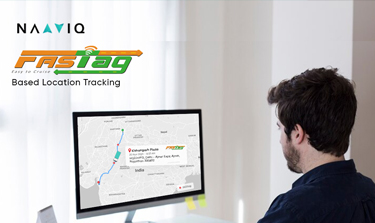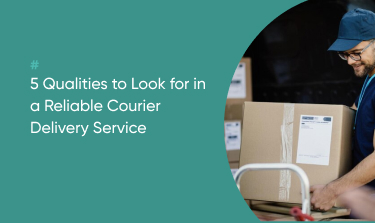The importance of optimizing efficiency and reducing costs in transportation freight
In the realm of modern business, the efficiency of transportation freight is more than just a logistical necessity; it is a critical factor that can differentiate successful companies from their competitors. As global trade continues to expand, the demand for rapid delivery and cost-effective shipping solutions has intensified. Companies that prioritise optimising their transportation processes not only enhance their operational performance but also improve customer satisfaction. An efficient transportation system enables businesses to meet delivery deadlines, respond to market demands rapidly, and maintain a reliable supply chain, which is essential for retaining customer loyalty.
Moreover, reducing costs in transportation freight directly impacts a company's bottom line. Freight costs can constitute a significant portion of total expenses, and any inefficiencies in the system can lead to increased overhead. By streamlining transportation logistics, businesses can minimize expenses associated with fuel, labor, and vehicle maintenance. Furthermore, reduced costs allow companies to invest in other critical areas such as product development, marketing, and customer service, which can drive growth and profitability. Therefore, optimizing transportation freight is not merely an operational task; it is a strategic initiative that can influence overall business success.
Finally, the importance of efficiency and cost reduction extends beyond the individual company. As businesses improve their transportation processes, they contribute to a more sustainable supply chain. Efficient freight transport reduces carbon emissions and energy consumption, supporting environmental goals and corporate social responsibility initiatives. This alignment with sustainability trends not only enhances a company's public image but also meets the growing expectations of consumers who demand environmentally friendly practices. In this context, optimizing transportation freight becomes a multifaceted goal that addresses both economic and environmental concerns.
Key factors impacting transportation freight efficiency and costs
Several key factors significantly influence the efficiency and costs associated with transportation freight. One of the most critical elements is the mode of transportation selected for shipping goods. Different modes, such as road, rail, air, and sea, have varying costs, transit times, and capacity constraints. For instance, air freight is typically faster but more expensive, while sea freight is cost-effective for large shipments but slower. Understanding the strengths and limitations of each mode allows businesses to make informed decisions that align with their operational priorities and budget constraints
Another critical factor is route optimization. The chosen route can greatly affect transit times, fuel consumption, and overall freight costs. Factors such as traffic patterns, road conditions, and geographic obstacles must be considered when optimizing routes. Advanced route planning tools can help logistics managers analyze multiple scenarios and select the most efficient paths for transportation. By minimizing unnecessary detours and delays, companies can achieve significant savings in both time and costs, contributing to an overall more efficient transportation system.
Additionally, the impact of supply chain management cannot be overlooked. Efficient collaboration with suppliers, carriers, and customers is essential for smooth operations. Disjointed communication can lead to delays, mismanagement of shipments, and increased costs. Implementing effective supply chain strategies that promote transparency and real-time tracking ensures that all stakeholders are informed about the status of shipments. Moreover, leveraging data analytics can provide valuable insights into demand forecasting and inventory management, further enhancing the efficiency of transportation freight operations.
Strategies for optimizing transportation freight efficiency
To achieve optimal efficiency in transportation freight, businesses can implement a range of strategies tailored to their unique operational needs. One effective approach is consolidating shipments. By combining multiple smaller shipments into a single larger load, companies can maximize vehicle capacity and reduce transportation costs. This strategy minimizes the number of trips required, optimizing both fuel usage and labor efforts. Advanced Transport management software like NaaviQ can identify opportunities for consolidation, enabling businesses to operate more efficiently without compromising delivery timelines.
Another key strategy is to establish strong partnerships with reliable carriers. Building long-term relationships with trusted transportation providers can lead to negotiated rates, better service levels, and more flexible shipping options. Companies should assess carriers based on their performance, reliability, and capacity to meet specific needs. By fostering collaboration and open communication, businesses can ensure that their shipping requirements are met effectively while also obtaining favorable pricing structures that contribute to cost savings.
Additionally, implementing performance metrics and continuous improvement processes is vital for optimizing transportation freight. Companies should track key performance indicators (KPIs) such as on-time delivery rates, freight costs per mile, and damage rates. Regularly analyzing this data allows businesses to identify inefficiencies, address potential issues, and refine operational processes. By embracing a culture of continuous improvement, organizations can adapt to changing market conditions and implement best practices that enhance transportation efficiency over time.
Technologies and tools for improving transportation freight efficiency
The integration of technology in transportation freight has revolutionized the industry, providing innovative solutions to enhance efficiency and reduce costs. One of the most significant advancements is the use of transportation management systems (TMS). A TMS like NaaviQ enables businesses to plan, execute, and optimize the movement of goods efficiently. It provides real-time visibility into shipments, facilitates route optimisation, and simplifies carrier management. By leveraging a NaaviQ, companies can streamline operations, minimize delays, and achieve better cost control.
Furthermore, the adoption of GPS and Sim Network, tracking has transformed the way businesses monitor their freight. These technologies provide real-time data on vehicle location, speed, and fuel consumption, allowing logistics managers to make informed decisions quickly. With this information, companies can proactively address potential issues, such as delays or route deviations, and keep customers informed about shipment status. The transparency offered by GPS tracking fosters trust between businesses and their clients, ultimately enhancing customer satisfaction.
Additionally, data analytics plays a crucial role in improving transportation freight efficiency. By analyzing historical shipping data, businesses can identify trends, assess carrier performance, and predict future demand. This data-driven approach enables companies to make proactive adjustments to their logistics strategies, optimizing capacity and reducing costs. Implementing machine learning algorithms can further enhance these capabilities by providing predictive insights that help businesses anticipate challenges and seize opportunities in their transportation operations.
Best practices for reducing transportation freight costs
Reducing transportation freight costs requires a combination of strategic planning and best practices. One effective method is to regularly review shipping contracts and negotiate favorable terms with carriers. As market conditions change, it is essential to ensure that agreements align with current needs and pricing trends. Companies should not hesitate to explore alternative carriers or negotiate volume discounts based on shipping frequency. Establishing competitive rates can significantly lower transportation costs and improve overall profitability.
Implementing a comprehensive freight audit process is another best practice that can lead to cost reductions. By reviewing invoices and shipping documents, businesses can identify discrepancies, overcharges, or billing errors. An audit helps ensure that companies are only paying for services rendered and can reveal opportunities for cost savings. Additionally, conducting regular audits reinforces accountability among carriers and encourages them to provide accurate and fair pricing.
Finally, optimizing inventory management can significantly impact transportation costs. By maintaining optimal inventory levels, businesses can reduce the need for expedited shipping or emergency orders, which often incur higher costs. Implementing just-in-time inventory strategies, where goods are received as needed, can minimize storage costs and improve cash flow. By aligning inventory management practices with transportation logistics, companies can achieve greater overall efficiency and cost-effectiveness in their supply chain operations.
Case studies: Successful examples of optimizing efficiency and reducing costs in transportation freight
Examining real-life case studies provides valuable insights into how companies have successfully optimized efficiency and reduced costs in transportation freight. One notable example is a major retail chain that implemented a sophisticated NaaviQ to streamline its shipping processes. By leveraging the TMS's route optimization capabilities, the company was able to reduce transportation costs by 15% within the first year. The solution provided visibility into shipment statuses and allowed for better collaboration with carriers, resulting in improved delivery times and customer satisfaction.
Another compelling case study involves a manufacturing company that adopted a data-driven approach to its logistics operations. By analyzing historical shipping data, the company identified patterns in demand and adjusted its transportation strategies accordingly. This proactive approach led to a 20% reduction in freight costs and a 30% increase in on-time deliveries. The company also engaged in regular freight audits, which uncovered billing discrepancies that resulted in additional cost savings. This case illustrates the power of data analytics in enhancing transportation freight efficiency.
A third example is a logistics provider that focused on sustainability while optimizing its transportation operations. By investing in fuel-efficient vehicles and implementing a comprehensive route-planning system, the provider was able to reduce fuel consumption by 25%. Additionally, the company established partnerships with carriers committed to environmentally friendly practices. This dual focus on cost reduction and sustainability not only improved the provider's operational efficiency but also enhanced its reputation in the market, attracting environmentally conscious clients.
Challenges and obstacles in optimizing transportation freight efficiency and reducing costs
While optimizing transportation freight efficiency and reducing costs is a goal for many businesses, several challenges and obstacles can impede progress. One of the primary challenges is the complexity of logistics networks. As companies expand their operations globally, they must navigate diverse regulations, customs requirements, and varying market conditions. This complexity can lead to delays, increased costs, and difficulties in maintaining consistent service levels. Companies must invest time and resources to understand these complexities and develop comprehensive strategies to address them.
Additionally, fluctuations in fuel prices can create unpredictability in transportation costs. Fuel is one of the most significant operating expenses for logistics companies, and sudden increases in prices can erode profit margins. Businesses must be prepared to manage these fluctuations by exploring fuel surcharges, optimizing routes, and investing in fuel-efficient technologies. Implementing a fuel management strategy can help mitigate the impact of fuel price volatility and enhance overall cost control.
Moreover, the ongoing global supply chain disruptions, exacerbated by events such as pandemics or natural disasters, present significant obstacles. These disruptions can lead to delays, increased shipping costs, and challenges in sourcing materials. Companies must develop contingency plans to navigate these uncertainties and ensure the resilience of their transportation operations. Building strong relationships with suppliers and carriers can also provide valuable support during challenging times, enabling businesses to adapt quickly and maintain operational efficiency.
Future trends and innovations in transportation freight optimization
The landscape of transportation freight optimization is continually evolving, driven by advancements in technology and changing market dynamics. One of the most significant trends is the increasing adoption of automation in logistics operations. From autonomous vehicles to automated warehouses, technology is transforming how goods are transported and managed. These innovations not only improve efficiency but also reduce labor costs, allowing businesses to allocate resources more effectively. As technology continues to advance, the logistics industry can expect further enhancements in speed and accuracy.
Another emerging trend is the growing focus on sustainability and environmentally friendly practices. Companies are under increasing pressure to reduce their carbon footprint and adopt green logistics solutions. This shift is prompting businesses to invest in alternative fuels, electric vehicles, and eco-friendly packaging. Moreover, logistics providers are exploring ways to optimize their transportation networks to minimize emissions. By prioritizing sustainability, companies can not only comply with regulations but also appeal to environmentally conscious consumers, enhancing their brand image.
Finally, the integration of artificial intelligence (AI) and machine learning is set to revolutionize transportation freight optimization. These technologies enable businesses to analyze vast amounts of data and derive actionable insights. AI can enhance demand forecasting, improve route planning, and automate decision-making processes. As companies harness the power of AI, they can achieve greater levels of efficiency and cost savings in their transportation operations. The future of transportation freight management lies in leveraging these innovations to create agile and responsive supply chains.
Conclusion: Key takeaways and final thoughts on optimizing efficiency and reducing costs in transportation freight
Optimizing efficiency and reducing costs in transportation freight is a multifaceted endeavor that requires a strategic approach and a commitment to continuous improvement. Businesses must recognize the importance of selecting the right transportation mode, optimizing routes, and managing supply chain relationships to achieve their objectives. By implementing effective TMS like NaaviQ , companies can streamline their operations, enhance customer satisfaction, and drive profitability..
Moreover, the journey toward greater efficiency is supported by best practices such as regular contract reviews, freight audits, and inventory management optimization. These practices empower businesses to take control of their transportation costs while maintaining high service levels. Additionally, learning from successful case studies can provide valuable insights into effective transportation management strategies. .
As the logistics landscape continues to evolve, businesses must remain vigilant in addressing the challenges and obstacles that arise. By embracing future trends such as automation, sustainability, and AI integration, companies can position themselves for success in an increasingly competitive environment. Ultimately, optimizing transportation freight is not merely a cost-saving initiative; it is a crucial component of a company's overall strategy for growth and success in today's dynamic marketplace





